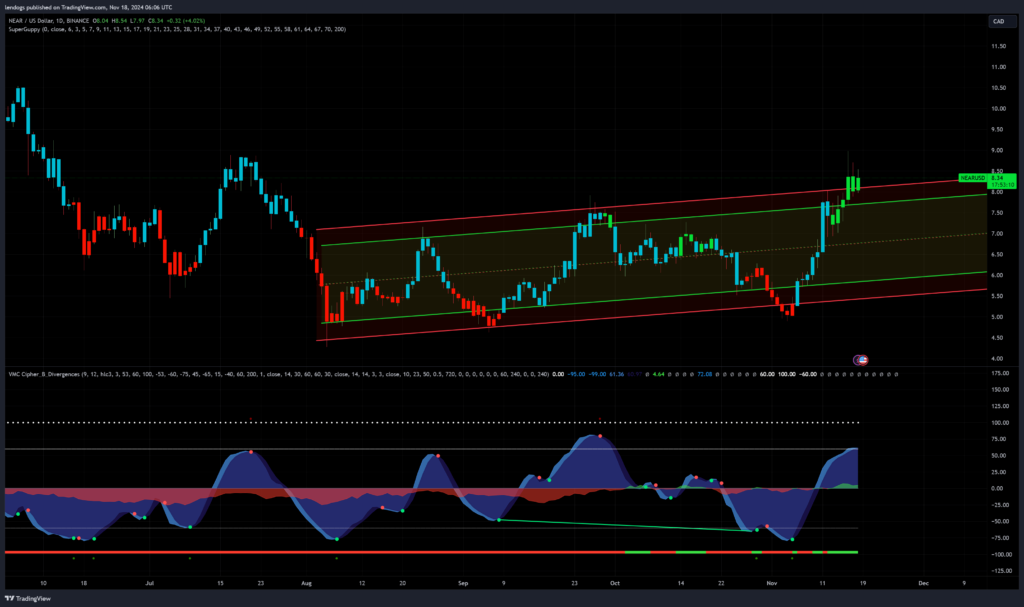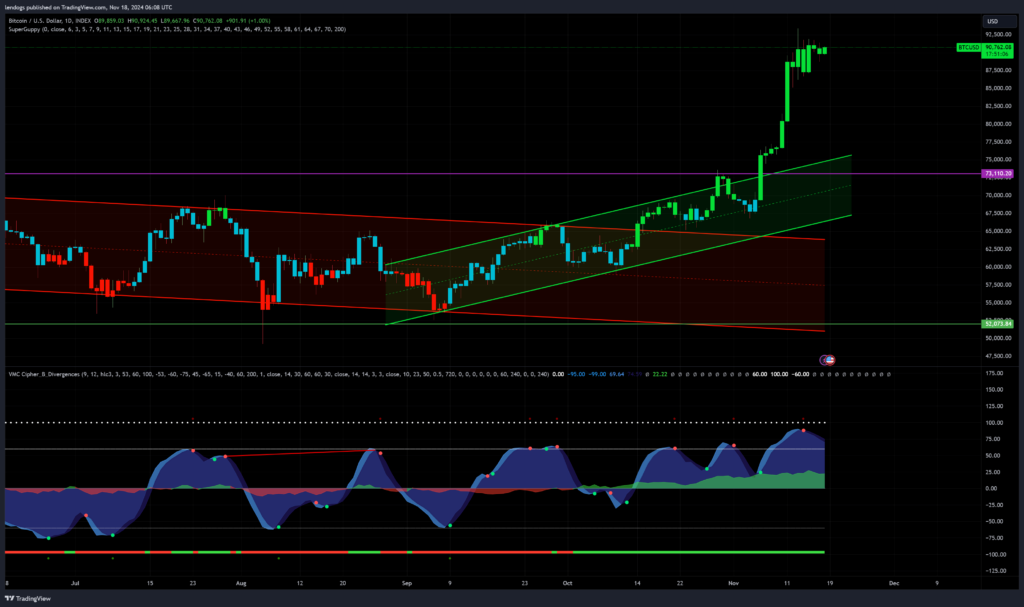Momentum trading is a strategy used in financial markets to capitalize on the continuance of an existing trend. Traders using this strategy buy assets when they observe a strong upward trend and sell when the momentum begins to fade, or they do the reverse for downward trends. The underlying belief is that trends, once established, are likely to persist for a time, allowing traders to profit by riding the wave.
Momentum trading is not about predicting the future direction of an asset. Instead, it’s about identifying assets that are currently moving strongly in one direction and acting accordingly. This method works best in markets that display clear trends and high volatility.
Key Takeaways
- Momentum trading relies on riding market trends rather than predicting price movements.
- Traders look for strong price movements and volume spikes to identify opportunities.
- This strategy requires a mix of technical analysis tools and strict risk management.
- It’s popular among day traders and swing traders due to its potential for quick profits.

How Does Momentum Trading Work?
Momentum trading involves three critical steps:
- Identifying Momentum:
- Use technical indicators like Relative Strength Index (RSI), Moving Averages (MA), or the Moving Average Convergence Divergence (MACD).
- Look for assets showing above-average volume and strong directional price movement.
- Entering a Trade:
- Buy when upward momentum is strong or short-sell during strong downward momentum.
- Enter the trade as close to the start of the trend as possible to maximize profits.
- Exiting a Trade:
- Close the position when momentum begins to fade, often indicated by decreasing volume or a reversal in trend signals.
- Use trailing stop-loss orders to lock in gains as the trend continues.
Advantages of Momentum Trading
- High Potential for Profit:
- Capitalizing on strong trends can yield significant returns in short timeframes.
- Simplicity in Execution:
- The strategy focuses purely on current trends, reducing the complexity of fundamental analysis.
- Versatility:
- Works across different asset classes like stocks, forex, and cryptocurrencies.
Risks of Momentum Trading

- High Volatility:
- Price reversals can occur suddenly, leading to losses if not managed properly.
- Requires Constant Monitoring:
- Momentum trading often involves short-term positions, needing active oversight.
- Transaction Costs:
- Frequent trading incurs higher brokerage fees, which can eat into profits.
Tools and Indicators for Momentum Trading
Momentum traders rely on a variety of technical tools:
- Moving Averages:
- Identifies trends and potential reversals by smoothing out price data.
- Relative Strength Index (RSI):
- Measures the strength of a trend and potential overbought/oversold conditions.
- MACD:
- Helps identify trend direction and strength by comparing moving averages.
- Bollinger Bands:
- Used to measure market volatility and identify overbought/oversold levels.
Momentum Trading Strategies
- Breakout Trading:
- Enter trades when the price breaks through significant support or resistance levels.
- Trend Following:
- Follow the direction of the primary trend until signs of reversal appear.
- Volume Confirmation:
- Ensure strong volume supports price movement, as it indicates sustained momentum.
Momentum Trading Example
Suppose a stock breaks above a key resistance level with a surge in volume. A momentum trader would buy the stock at the breakout point and hold the position as long as the upward trend persists. If the RSI indicates overbought levels and volume starts to decline, they would sell to secure profits.
FAQs
What is the best market for momentum trading?
Momentum trading works best in volatile markets like stocks, forex, and cryptocurrencies, where price trends are more pronounced.
How do I manage risk in momentum trading?
Use stop-loss orders, diversify your trades, and avoid over-leveraging. These steps help minimize potential losses.
Is momentum trading suitable for beginners?
While it can be profitable, momentum trading requires quick decision-making and a solid understanding of technical analysis. Beginners should start with small trades and practice on demo accounts.